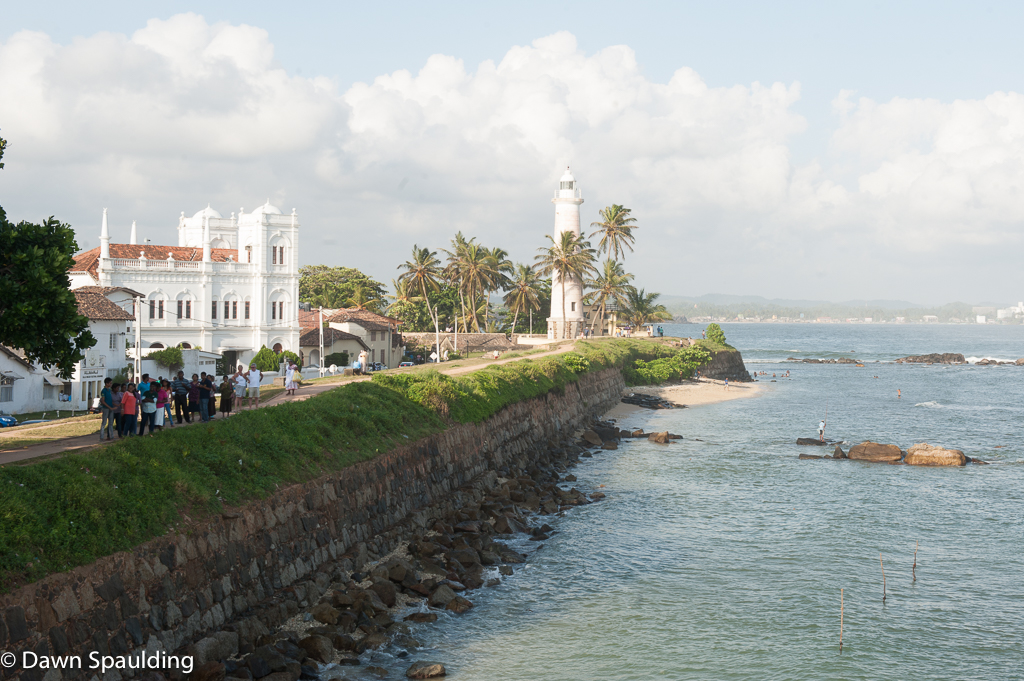
Our last stop in Sri Lanka was Galle, a preserved Dutch colonial town.
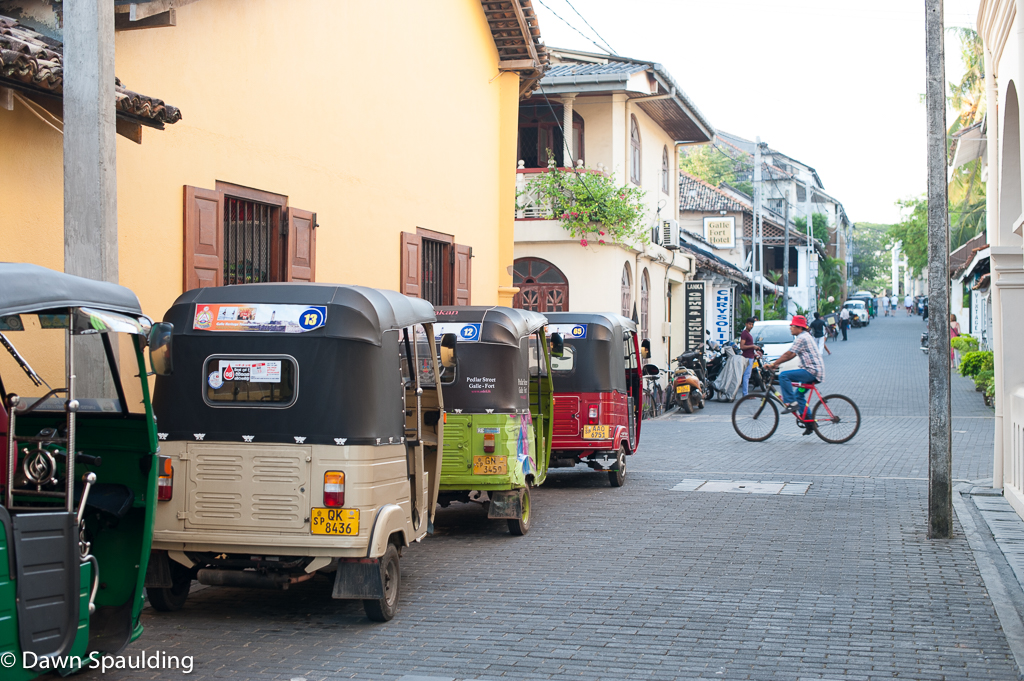
The town is lively, with many restaurants and shops.
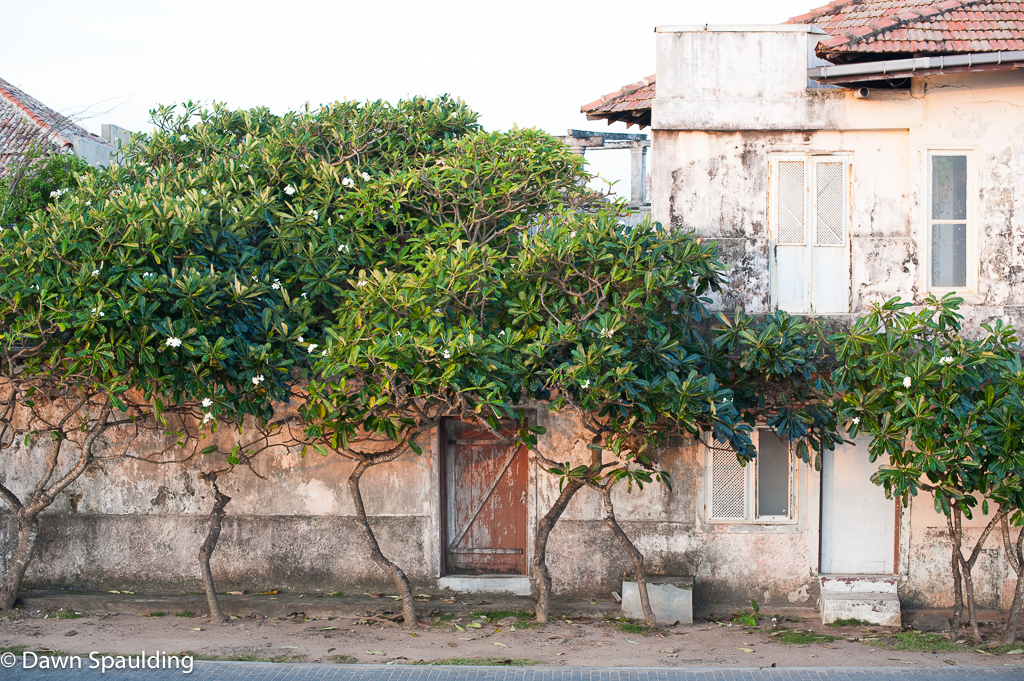
Well, it was established by the Portugese in the 16th Century. They constructed a fort and built bastions and walls. Then, in the the 17th Century, the Dutch captured it and expanded the area to include the seaside promontory. They also added a sewer system and a street plan.
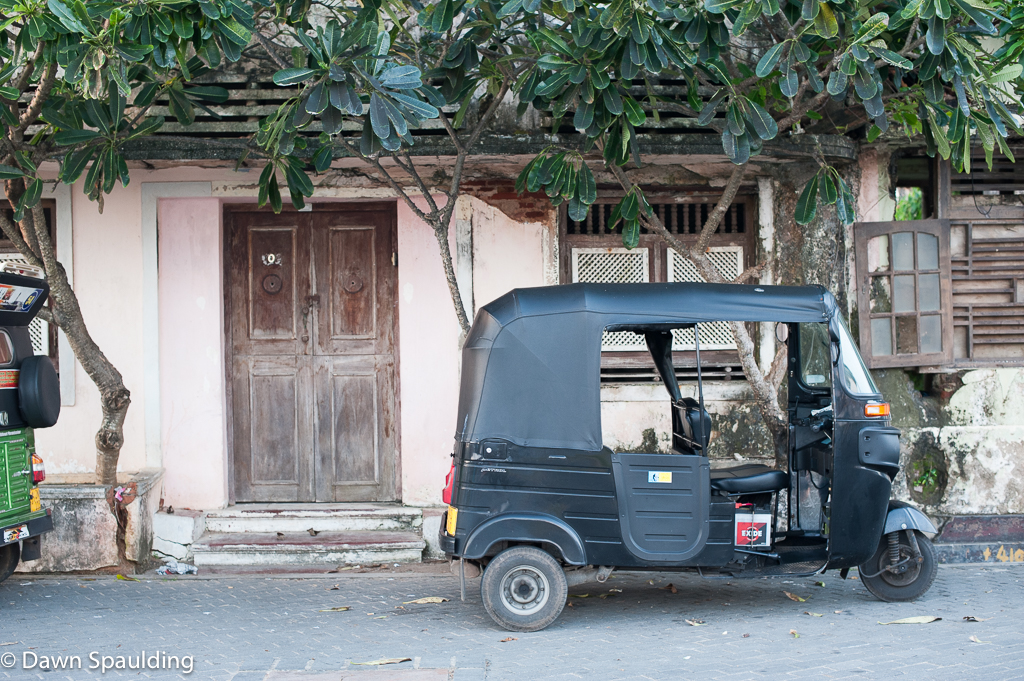
The British took in the 18th century following the Dutch defeat in the Napoleonic Wars.

This part of Sri Lanka was too far south for the Indian invasions that occurred in the northern part of the country.
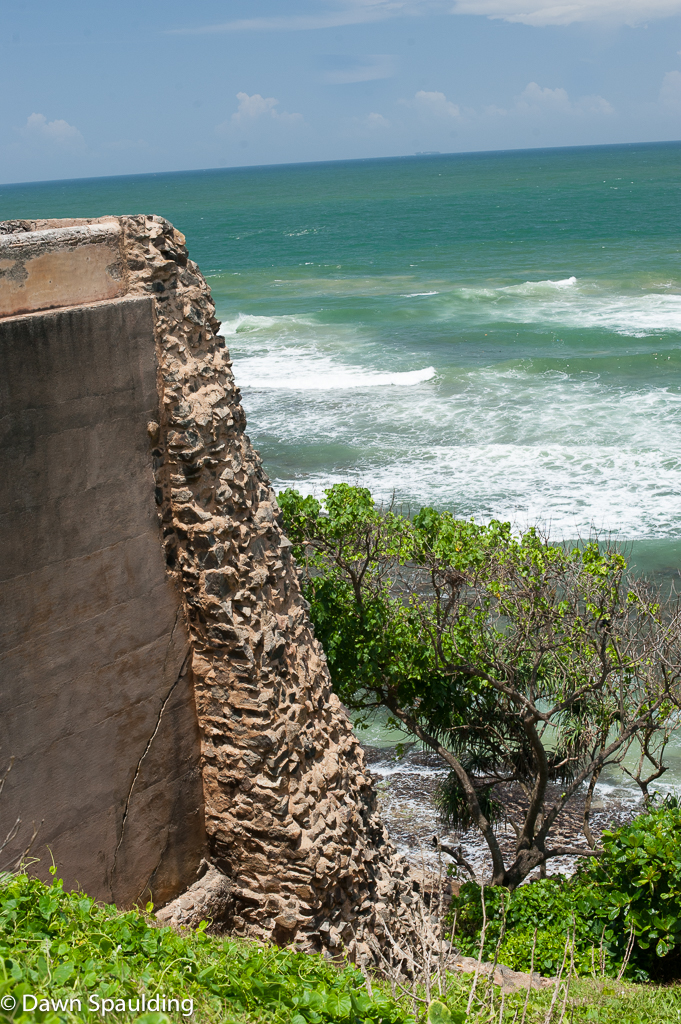
At one point, Galle was Ceylon’s principal harbor. Ships traveling between Asia and Europe stopped here. Colombo, the major coastal city north, replaced it in the 19th Century.
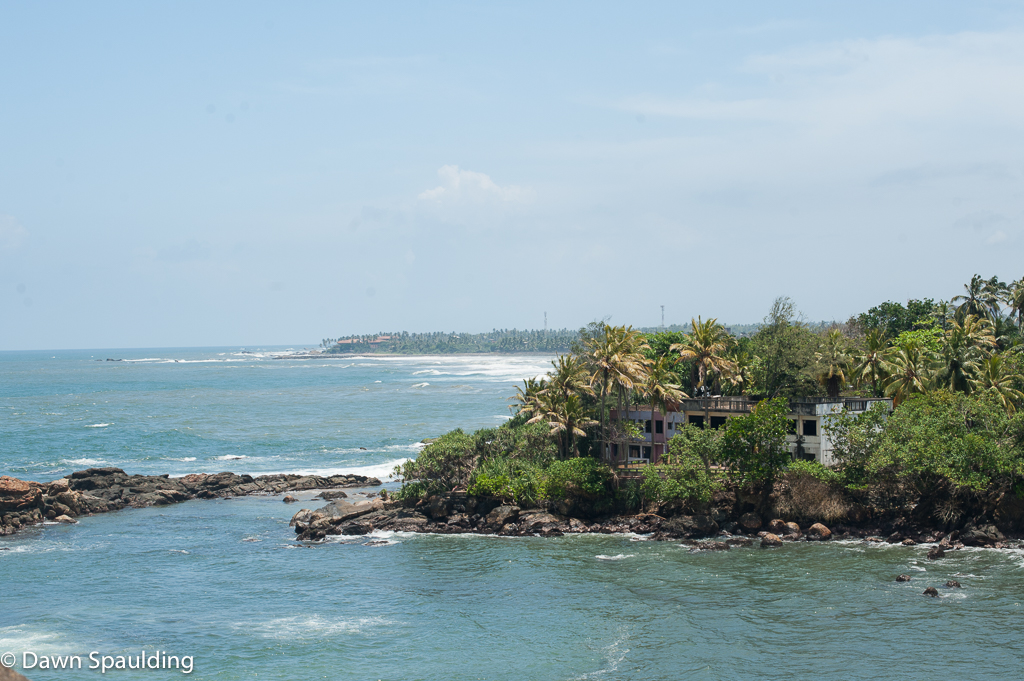
The town is peppered with Dutch-style villas with street-facing verandas. There’s no shortage of churches, mosques, temples and government buildings.
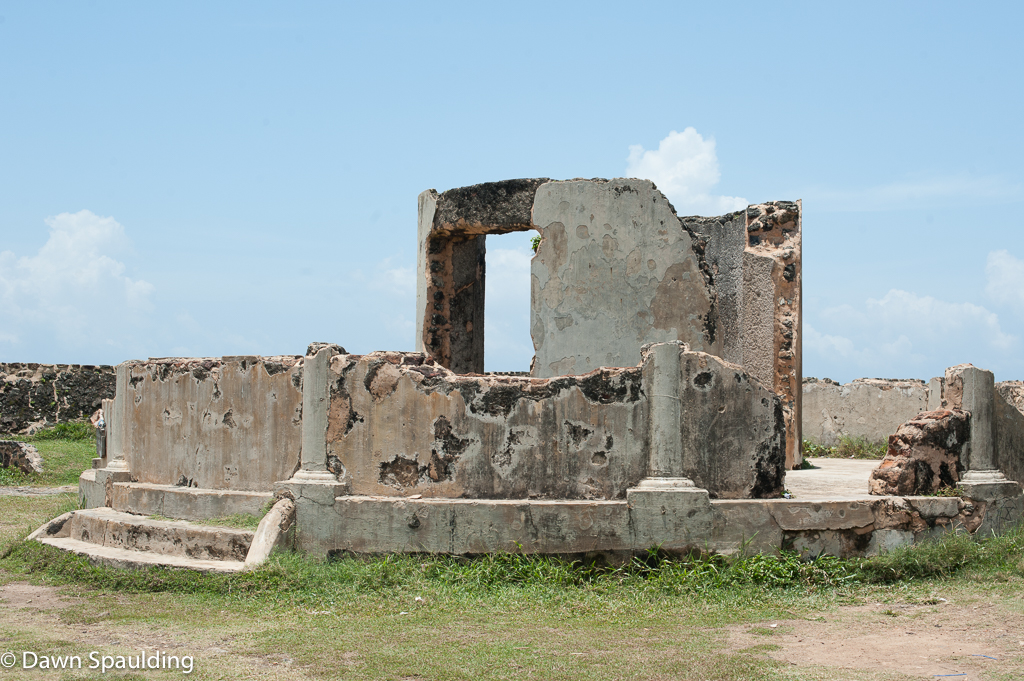
The eastern wall of the historic Galle Fort ends at Point Utrecht Bastion, which hosts the famous Galle Lighthouse. It is one of 14 bastions and is said to be named after Utrecht, the hometown of the first clergyman to arrive in Galle as part of the Dutch Reformed Church in 1641.
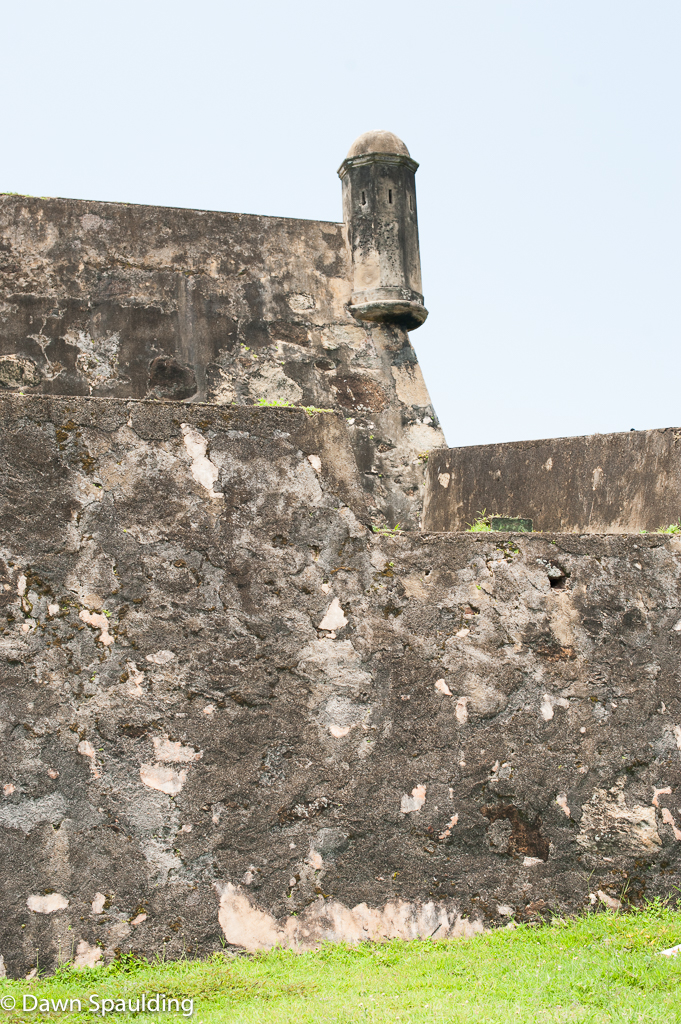
All the bastions were heavily fortified to protect the land.
No comments yet.